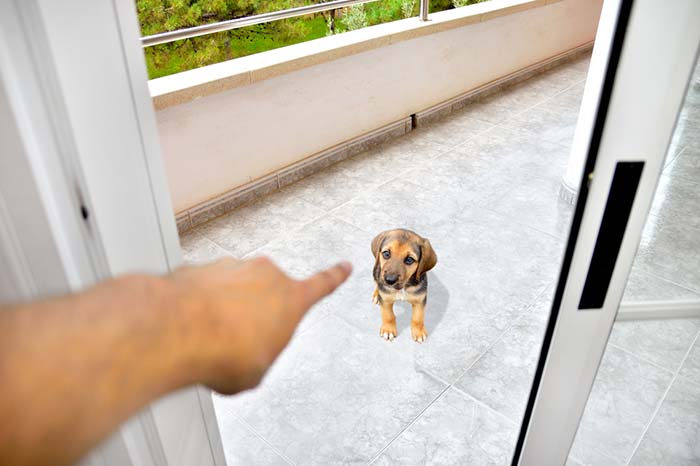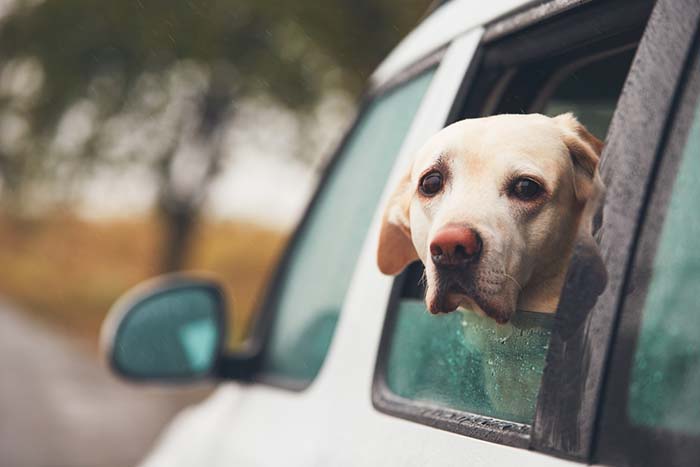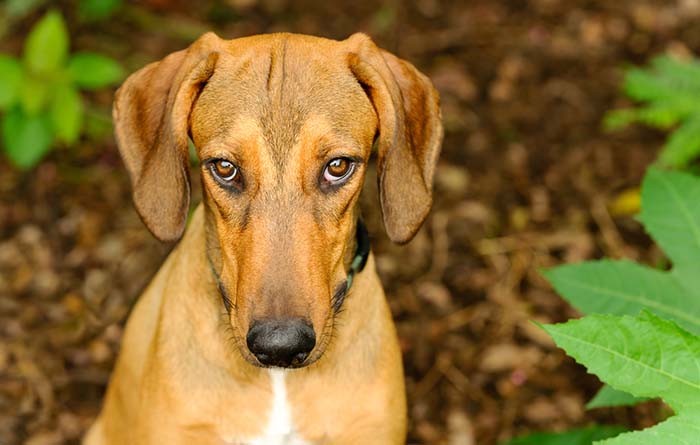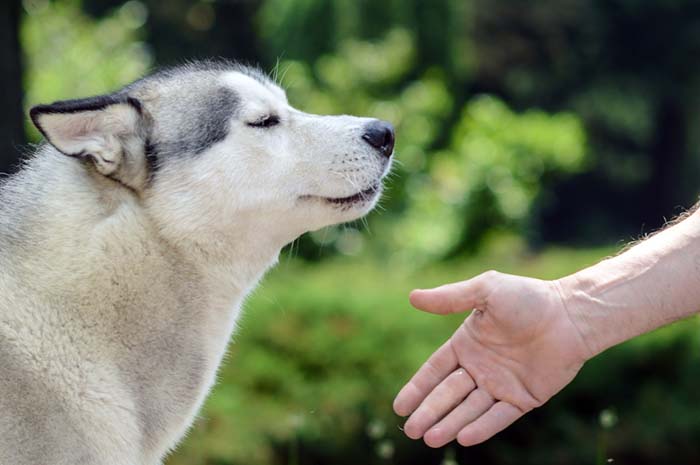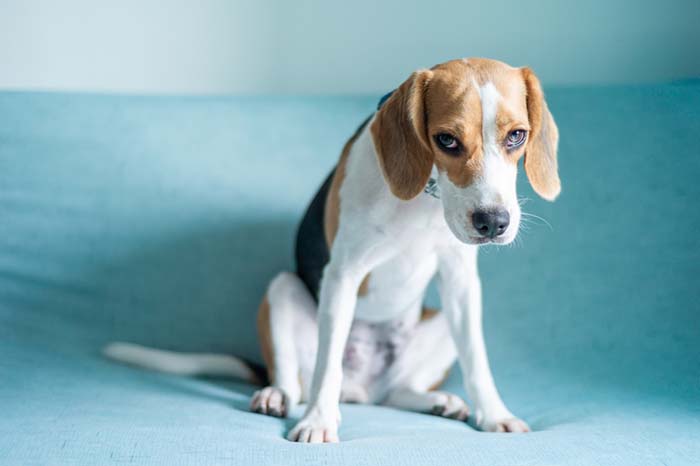The world is a stressful place and even dogs experience triggers that can easily raise their anxiety level. Some pet owners, however, don't realize that the simple and common things they do may cause dog stress.
Here are seven common situations that's likely stressing out your dogs:
1. When you keep pulling the dog's leash
Your dog will likely stop, pause and sniff items around him during your walks and sometimes he might take the time to smell the grass, or tree, or a fire hydrant. If you keep pulling your dog's leash to redirect him to start walking again, you’ll only stress him out and he’ll resist even more. You need to consider why he's making those stops in the first place so you would stop pulling his leash.
Dogs need to inspect what's around them because that's how they get stimulated, and studies have shown there are benefits to that. If you literally keep yanking his chain, you are denying him this need and this natural instinct. If he doesn't get stimulated, he'll easily become stressed too. Instead, be patient and give your dog time and understanding and let him inspect the things he'd like to smell, and learn how to stop dog pulling on the leash the correct way.
2. When you're invading the dog's personal space
Most of us like to hug and kiss our dogs since that's how we humans show affection. However, psychology and canine expert Dr. Stanley Coren, PhD reviewed the studies and wrote in Psychology Today that dogs can be stressed out by these actions since it's an invasion of their personal space and their understanding of a “hug” is different to our perception of it.
There are dogs that do not like it if a human puts a face too close to theirs. There are also dogs who don't like it when someone is hovering over them as this person is about to give a hug. Dogs generally also dislike the feeling of being held so tightly when their humans refuse to let them go. In these situations, the dog might react with aggression – biting or scratching the person if they are stressed out over the close contact.
If your dog isn't fond of hugs and kisses, then limit the contact to patting and stroking for now. If you have visitors who might want to interact with your dog, make sure to let them know not to hug and kiss the dog because it will make your pet uncomfortable.
3. When you point or shake a finger at the dog
Finger-pointing triggers stress in dogs because of how you are positioned. You are standing over a dog in such a way that looks menacing and intimidating for the pup. The dog can also sense the negative vibe in the tone of your voice as you express your distrust, anger or disgust. You often see dogs looking guilty when the owner reprimands and points a finger at them. But this isn't so much their guilt showing as it's really them being stressed out.
Use positive reinforcements instead of reprimanding your dog in this manner. Redirect the unwanted behavior instead of shaming. If he makes a mistake, consider changing the environment. Put a lock or barriers like pet gates in areas where dogs are off limits or keep items secure in drawers and cabinets if you don't want our dogs to get a hold of it.
4. When you take your dog for a ride
Majority of canines enjoy a ride in a car, but there are some dogs who dislike car rides not because it's associated with a trip to the vet but because they are not used to this or they have not been exposed to riding in a car as a puppy. It's also a weird and unfamiliar environment for them to be in. There's a loud sound coming from the engine. There's a vibration because the car is moving and the car might even have its distinctive smell.
When dogs get stressed inside the car, they end up experiencing motion sickness, vomiting or peeing. If this is the case, you have to help the dog get over this car phobia by doing frequent but short car rides and making sure he's getting a positive experience from the trip each time.
To prevent sliding of the dog and experiencing motion sickness, secure him in a crash-tested car harness. Other methods to reduce stress in dogs while in car can also work, and in particular it might be very helpful if you play calming music on the car radio to muffle the sound of the engine. Bring his favorite toy or blanket each time you go on your short trips.
5. When you stare at the dog
For a dog, a stare is a challenge. It's a nonverbal cue that means you're ready for a confrontation and it could make your dog's “blood boiling” and thereby trigger a stress response, especially if you still have not established that you're the pack leader.
However, if you have a stronger bond with your pet, eye contact can be a very effective tool for teaching your dog to behave. So, work on becoming bonded to your dog by spending quality time and establishing a truthful relationship. Eventually, he won’t read your stare as a challenge and instead as the attention he wants from the owner.
6. When you repeatedly say no
You tell your dog no when you don't want him to do something bad. However, this will only be a temporary interruption and a stress trigger if you don't redirect your dog's behavior and give the pup alternatives to what he must do instead. You need to show your dog what you really want from him apart from simply saying no.
For instance, when you encounter destructive behavior and catch your dog eating a shoe, say a firm “no,” take the item away from him and then replace the shoe with his toy. Do this process each time he attempts to destroy things he shouldn't touch until he gets what you really want from him to do when he's triggered to chew on things.
7. When he's in a new environment or around new people
Dogs are creatures of habit and they can easily experience stress when something around them changes. A move to a new house, the arrival of guests at a party, a visit to a new dog park, a change in their routine – all of these are can be triggers that will stress out your dog.
Your pup needs to be paced slowly if you're introducing new things or new people because he can get overwhelmed. Always allow the dog to explore these new things in his own time and watch out for the signs of stress in dogs.
For instance, if you're having some guests over, consider temporarily crating your dog or using a pet barrier to prevent him from approaching people. Make him get used to the noise first and then gradually open the door or crate to let him out and sniff around. Be patient if he doesn't step out right away. If he does and starts going around the room to sniff, give him the freedom but always keep an eye on the dog. He'll eventually warm up and relax if he sees that there's really nothing to be worried about.
Dogs are very straightforward thinking creatures. When they are not comfortable or stressed, you will always know by watching how they behave. A good pet owner will always be aware of the stress signals in dogs and will be quick to act on it, too.
READ NEXT: 7 Proven Ways to Calm Down A Dog (Backed by Science)




